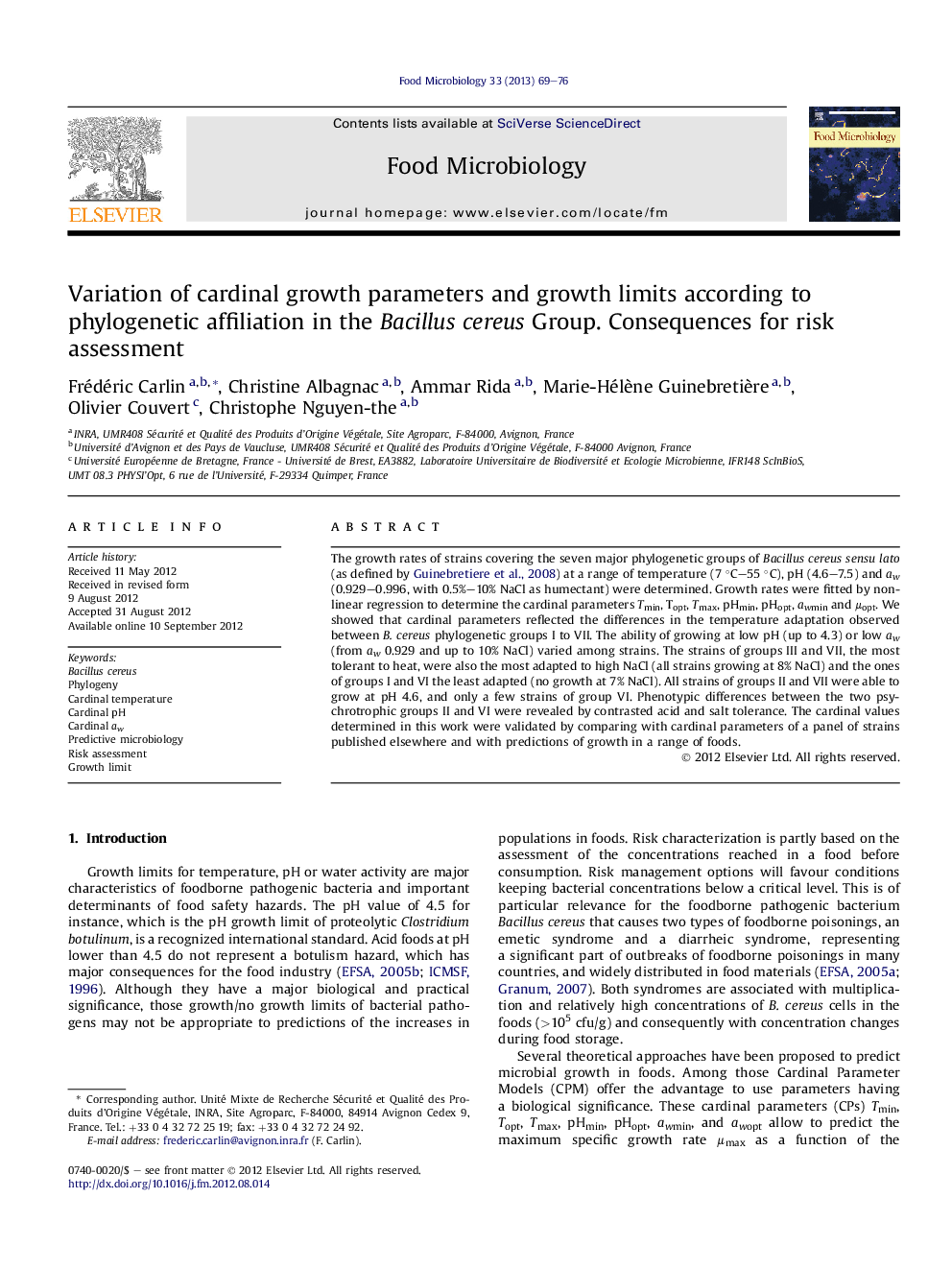| Article ID | Journal | Published Year | Pages | File Type |
|---|---|---|---|---|
| 4362975 | Food Microbiology | 2013 | 8 Pages |
The growth rates of strains covering the seven major phylogenetic groups of Bacillus cereus sensu lato (as defined by Guinebretiere et al., 2008) at a range of temperature (7 °C–55 °C), pH (4.6–7.5) and aw (0.929–0.996, with 0.5%–10% NaCl as humectant) were determined. Growth rates were fitted by non-linear regression to determine the cardinal parameters Tmin, Topt, Tmax, pHmin, pHopt, awmin and μopt. We showed that cardinal parameters reflected the differences in the temperature adaptation observed between B. cereus phylogenetic groups I to VII. The ability of growing at low pH (up to 4.3) or low aw (from aw 0.929 and up to 10% NaCl) varied among strains. The strains of groups III and VII, the most tolerant to heat, were also the most adapted to high NaCl (all strains growing at 8% NaCl) and the ones of groups I and VI the least adapted (no growth at 7% NaCl). All strains of groups II and VII were able to grow at pH 4.6, and only a few strains of group VI. Phenotypic differences between the two psychrotrophic groups II and VI were revealed by contrasted acid and salt tolerance. The cardinal values determined in this work were validated by comparing with cardinal parameters of a panel of strains published elsewhere and with predictions of growth in a range of foods.
► Bacillus cereus strains show a large variety of adaptation to temperature pH and aw. ► Cardinal parameters were determined on 12 strains covering B. cereus diversity. ► Cardinal parameters also reflect this diversity of adaptation. ► Cardinal parameters were compared to those from other sources. ► The adaptation to low pH and aw is linked to the phylogeny of B. cereus sensu lato.
